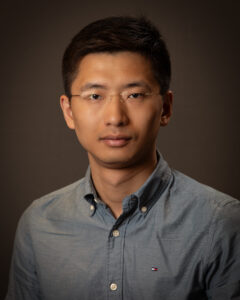 The Department of Mechanical Engineering is excited to welcome Dr. Xiaowei He as an assistant professor this spring. Dr. Xiaowei He’s research lies at the intersection of unsteady aerodynamics and flow control on the experimental side, which consists of flow physics and modeling of unsteady flow encounters, development of active flow control techniques, and advances in unsteady experimental facilities and methods. These topics together close the loop of control of vehicles in unsteady flow environments.
The Department of Mechanical Engineering is excited to welcome Dr. Xiaowei He as an assistant professor this spring. Dr. Xiaowei He’s research lies at the intersection of unsteady aerodynamics and flow control on the experimental side, which consists of flow physics and modeling of unsteady flow encounters, development of active flow control techniques, and advances in unsteady experimental facilities and methods. These topics together close the loop of control of vehicles in unsteady flow environments.
Dr. He received his B.E. in mechanical engineering from Jincheng College of Sichuan University, and both M.S. and Ph.D. in mechanical and aerospace engineering from the Illinois Institute of Technology. Prior to joining the University of Utah, He did his postdoctoral research on bio-inspired underwater maneuvering at Brown University.
The big picture of He’s research can be described by a triangle that links flow physics, flow control applications, and experimental methods. The understanding of the physics behind unsteady flows and associated vehicle-flow interactions is the foundation of advances in aerodynamic design, modeling, and control. It also provides fundamental guidance for the development of flow control techniques and unsteady experimental methods. Flow control gives tools and solutions to aerodynamic challenges. As the iteration between fluid dynamic principles and practical techniques evolves, it extends the flow control applications to other related areas, such as bio-inspired flow sensing, fluid-structure interactions, and ocean engineering.
Unsteady aerodynamics is an ongoing research area that needs continuous effort, especially when it comes to enhancing future aircraft design, flight control, and sustainable energy research. On the operational side, flow control provides tools to achieve these goals, which also requires more systematic investigations of the fluid dynamic fundamentals, and those discoveries need to be transferred from the lab environment to application scenarios. Dr. He will lead the Flow Physics and Control Lab where he will continue the unsteady flow and flow control research stepping forward to multi-wing-gust interactions and applications of circulation control of aircraft. In addition, the FPC Lab will develop cyber-physical systems that allow for simulated free-body experiments in wind tunnels where test objects react to unsteady aerodynamic loads in real-time. In the meantime, the lab will add unsteady flow capabilities to the wind tunnel in the department. These efforts will sufficiently promote research on aerodynamics and flow control, as well as related multidisciplinary applications.